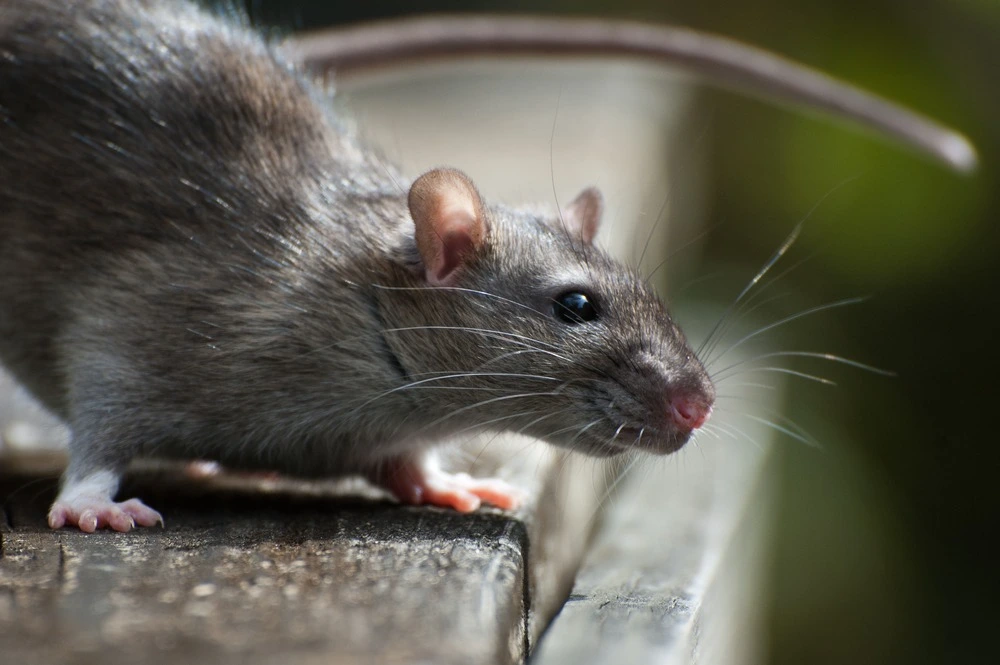
Mosquito Joe explains key differences between rats and mice for effective pest control.
|
Ladies and gentlemen welcome to the Ultimate Critter Clash: Rat vs. Mouse. In this corner, weighing in at up to one pound, with jaws strong enough to chew through walls and wires…it’s the heavyweight menace: the rat! And in the other corner, smaller, faster, and able to squeeze through a hole the size of a dime… it’s the tiny terror: the mouse!
Rats vs. Mice — it’s a classic showdown between rodents. If you think there’s no real difference between a mouse and a rat or that rats and mice are the same thing — buckle up! We’re going to explore the differences in their sizes, builds, and behaviors. Not only are these crafty critters quite distinct, but their differences can really affect your rodent control efforts.
Let’s get ready to rumble!
Physical Differences Between a Mouse and a Rat
Rat vs. Mouse: Round One: Physicality
Let’s size up our contenders. Most people focus on size when placing their bets on rats vs. mice. Size is, indeed, one of the primary differences between rats and mice. The Norway rat, also known as the brown rat, is the largest of the common rats in America. This rodent grows up to 18 inches long, from nose tip to the tip of the hairless tail, and weighs in at about one pound. The common house mouse weighs just 0.5 to 0.9 ounces and grows 3 to 4 inches long, with the long, thin tail adding another 2 to 4 inches. Where the rat’s tail is thick, bare, and rather stiff, a mouse has a fine layer of hairs on its long, thin, flexible tail.
Before you assume you’ll always recognize a rat vs. mouse based on size alone, consider that juvenile rats are similar in size to adult mice. So, let’s consider other physical differences between mice and rats. Mice sport much larger, rounder ears in proportion to their size — the inspiration behind Mickey Mouse’s iconic ears. Meanwhile, rats have smaller, hairier ears. A mouse’s face comes to more of a point at the nose compared to the rat’s more blunted nose.
With their impressive size, rats make a statement in round one. But physical differences are just the start of this showdown.
Behavior Differences Between Mice and Rats
Rat vs. Mouse: Round Two: Behavior
As we head into Round Two, we’re diving into behavior — and here’s where the differences between a mouse and a rat get really interesting. Despite their considerable size advantage, rats are cautious by nature, preferring to stay hidden high above ground. Highly intelligent and resourceful climbers, they set up camp in attics and on rooftops high above the ground. Meanwhile, mice are the bold adventurers of the rodent world. They are far braver than rats and more inquisitive, readily exploring new territories and changes in their environment. For resting, mice prefer cozy, sheltered areas closer to the ground, inside wall cavities, or behind appliances, where they build nests and stay hidden.
The differences between mice and rats carry over to their diet. While both rodents are omnivores, mice prefer a high-carb diet rich in grains, fruits, and seeds. Rats, on the other hand, are all about protein and high-fat fuel, seeking meats, cheeses, and insects. It’s actually rats that love cheese and peanut butter rather than mice, although both enjoy a sugary dessert.
This round was close, but the mouse’s bravery puts him slightly ahead on points.
Signs of a Rat vs. Mouse Infestation
Rat vs. Mouse: Round Three: Droppings and Tracks
So far, our contestants are neck and neck, so we’re going to get down to the nitty-gritty in our final round by analyzing the key indicators of a rodent infestation: droppings and tracks. Both rats and mice leave a greasy trail behind them as they scuttle through your property. You’ll spot these grease marks along walls and baseboards where they travel. The greasy substance is called sebum, a buildup of natural oils and dirt, often accompanied by urine. So, since the presence of sebum won’t tell you whether you have a mouse vs. a rat, we need to look at the droppings.
A rat’s droppings are larger than a mouse’s, measuring about ½ to ¾ of an inch long, and tapered at one end. A mouse’s droppings are just a bare ¼ of an inch long and pointed at each end. Rats use their droppings to mark their territory, leaving multiple dark brown or black droppings at strategic locations in their territory. Mice, however, simply leave their lighter brown or pale gray droppings wherever they happen to fall as they go about their business.
Additional signs of a rat or mouse infestation include tracks and gnaw marks. A mouse’s tracks are less than a ½ inch, while rat tracks are as large as one inch across. The rat’s heavy, inflexible tail drags along the ground, leaving distinctive tracks in dust or snow, while the mouse typically lifts its lighter tail to help maintain balance, leaving fewer tail tracks. As for gnawing, the teeth of both rodents are always growing, so rats and mice must constantly gnaw and chew to keep their teeth from growing out of control. An adult mouse’s tooth marks are just 1 to 2 millimeters wide, while a rat’s are 3.5 to 4 millimeters. A gnawed mouse hole has crisp edges and is roughly the size of a dime, while rat holes are typically more ragged, the size of a quarter or larger.
So, who comes out ahead in our Critter Clash? We expected our Rat vs. Mouse match to have a clear winner, but they’re both serious contenders. It’s size and intelligence for the rats vs. agility and bravery for the mice. But recognizing the differences between a mouse and a rat is more than just trivia — it’s the key to effective rodent control.
Rat vs. Mouse: Why It's Important to Know the Difference
While our Critter Clash was fun, being able to recognize the differences between a mouse and a rat is serious business when you spot the warning signs of a rodent infestation. Both can do significant property damage, as well as carry and transmit diseases, including Hantavirus, Tularemia, and the bubonic plague. So, effective rodent control is essential, and that can depend on correctly identifying the rodent scurrying across your path.
Among the differences between rats and mice are dietary preferences and behaviors that factor into rodent control strategies. Bait rat traps with peanut butter, cheese, Nutella, or milk chocolate. For mice, you’ll do much better with granola, oatmeal, sunflower seeds, and suet cake. Choosing the right lure for the type of rodent makes your traps more effective. Either snap traps or glue traps work great with mice, but rats may be too big for the glue traps to do more than injure them.
Where you place the trap is another issue where recognizing a rat vs. mouse matters. Mice are naturally curious and will readily investigate new objects in their environment. Setting up multiple bait stations along their paths — near walls, inside cabinets, or behind appliances — can be effective. Rats, however, are canny and cautious. They tend to avoid anything new. Place rat traps where the rats feel secure, such as basements, attics, and garages. Use a favorite bait, but be prepared to wait several days before the rats feel confident enough to investigate.
Protect Your Home: How to Handle a Rat or Mouse Infestation
For all the differences between rats and mice, the strategies to protect your property from either rodent are the same. Start by sealing any potential entry points to your home or outbuildings. Look for cracks, holes, and gaps around windows, doors, and foundations. Remember that a mouse can slip through a hole the size of a dime, so be thorough and vigilant. Since rodents are drawn to food, keep the kitchen clean, store food in sealed containers, and take out the trash regularly. Pick up spilled pet food and bird seed, as well as any fallen fruit or vegetables in the garden. Also, pick up all paper trash, paper towels, dryer lint, and other soft substances — mice particularly love soft materials for their nests.
If you spot a furry blur scuttling past you, take prompt action. A single rodent can quickly become a full-scale infestation—and if you see one, there’s a good chance there are more you haven’t seen. When that happens, it’s time to call in the pros. Mosquito Joe® provides expert rodent control services as part of our comprehensive pest control services to protect your family, pets, and property from rats and mice.
You can count on Mosquito Joe to do the job right because the Neighborly Done Right Promise® backs everything we do. If you suspect you’re hosting your own Rat vs. Mouse Critter Clash, don’t wait. Request your free estimate and we’ll wrangle the contenders for you.
This article is intended for general informational purposes only and may not be applicable to every situation. You are responsible for determining the proper course of action for your home and property. Mosquito Joe is not responsible for any damages that occur as a result of this blog content or your actions. For the most accurate guidance, contact your local Mosquito Joe location for a comprehensive, on-site assessment.
